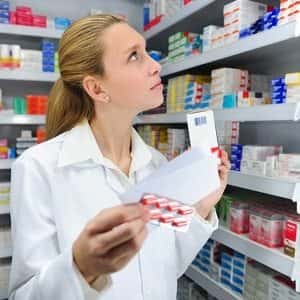
There was a time when most of the pharmacies in America were owned and operated by a pharmacist. They were friendly gathering places. The pharmacist knew your name and probably everyone in your family. When I was growing up in New Hope, PA, the local pharmacy on Main Street was run by Benny (short for Benjamin) Sidon. Some people called him doc. In addition to filling prescriptions he also created medications. My mother loved his specially formulated cough remedy and diarrhea medicine. If you had questions, Benny was happy to hand you the bag of pills and provide answers. Nowadays, if you want to talk to the pharmacist it requires some effort and patience.
Where Have All the Pharmacists Gone?
There are still some independent (aka community) pharmacies out there. At last count about 35% of the 67,000 pharmacies in the U.S. are community drugstores. The number keeps shrinking.
Dr. Adam Fein is CEO of Drug Channels Institute. He offered the following insights on the future of the independent pharmacy (Drug Channels, Jan. 15, 2019):
“…we estimate that in 2017, the average pharmacy owner’s salary fell to a level comparable to that of an employed pharmacist. Owning a pharmacy, with all of its hassles and additional obligations, now brings the same reward as being an employee. I wonder how many owners will conclude that it’s barely worth the risk and effort.
“The pharmacy consolidation endgame is getting closer. The next time you see a pharmacy owner, offer your condolences.”
The Chains Are Taking Over:
The top five chains are:
- CVS with over 9,000 stores and 24% of the market
- Walgreens with nearly 8,000 stores and 16% of the market
- Walmart, with over 4,000 pharmacies and 5% of the market
- Rite Aid with over 4,000 stores and 4% of the market
- Kroger with nearly 2,000 pharmacies and 3.2% of the market
Harder to Talk to the Pharmacist:
Chains make money because they deal in volume. That means efficiently filling as many prescriptions as possible. Some busy stores report more than 1,000 prescriptions go out the door on a busy Monday.
The pharmacist relies on “techs” to help fill prescriptions and work the counter. They get paid a pittance compared to the pharmacist and are not trained to answer your drug questions. It is a rarity to actually get your medicine directly from a pharmacist and have a calm opportunity to talk with her.
One disenchanted pharmacist we know likens the dispensing process to flipping burgers. The drive-through window just adds to that impression.
Many pharmacists tell us they don’t have time to go to the bathroom or take a decent lunch break. It’s non-stop controlled chaos. And patients quickly get the idea that the pharmacist is super busy.
We have observed that most customers grab and go when it comes to their prescription medicine. They either don’t want to bother the pharmacist or they don’t want to wait for a break in the action.
Why You SHOULD Talk to the Pharmacist:
Every medicine, Rx or OTC, has the potential to cause side effects. Would you know what symptoms to look out for if the acetaminophen you take for pain and/or the flu were damaging your liver? What about the metformin you take for diabetes? Do you know the signs of lactic acidosis? If not, you could end up in big trouble. Your pharmacist can tell you!
As important as learning about the side effects of your medicine you need to know precisely how to take your pills. Should they be swallowed with food or on an empty stomach? It matters. And what exactly is an empty stomach? Is that 20 minutes or two hours before a meal.
Finally, it is absolutely essential to ask the pharmacist to check for drug interactions. Many medications are incompatible with other compounds. That includes OTC remedies, vitamins and dietary supplements.
A Reader Has a Trick to Talk to the Pharmacist:
Q. You have written about using the pharmacist as an information resource. Unfortunately, in a lot of stores it is difficult to interact with the pharmacist face-to-face. Mostly, the person on the other side of the counter is a clerk or pharmacy technician.
Here is my solution: use your phone. I have done this several times and have always been able to speak with the pharmacist and get a response to my question. I may have to wait a few minutes, but it is worth my while.
A. We are glad to hear you take advantage of your pharmacist’s knowledge. Far too many people grab their prescriptions and speed off without taking the time to ask any questions. Pharmacists are well-equipped to answer questions about side effects, drug interactions and how to take your medicine.
Most pharmacies now have a space set aside for consultation, so people don’t have to ask embarrassing questions in front of other customers. Your suggestion is another good option.
The only downside to calling on the phone is the likelihood that you will be put on hold for 5, 10 or 15 minutes. Of course you will likely have to wait in the store as well. Pharmacists are way too busy these days to drop everything and consult with a patient at a moment’s notice.
We do long for the days when pharmacists had time to chat with customers as if they were old friends. Nowadays, if you can get past the pharmacy tech and grab a few quality moments to talk with the pharmacist, whether in the store or by phone, consider yourself fortunate.

